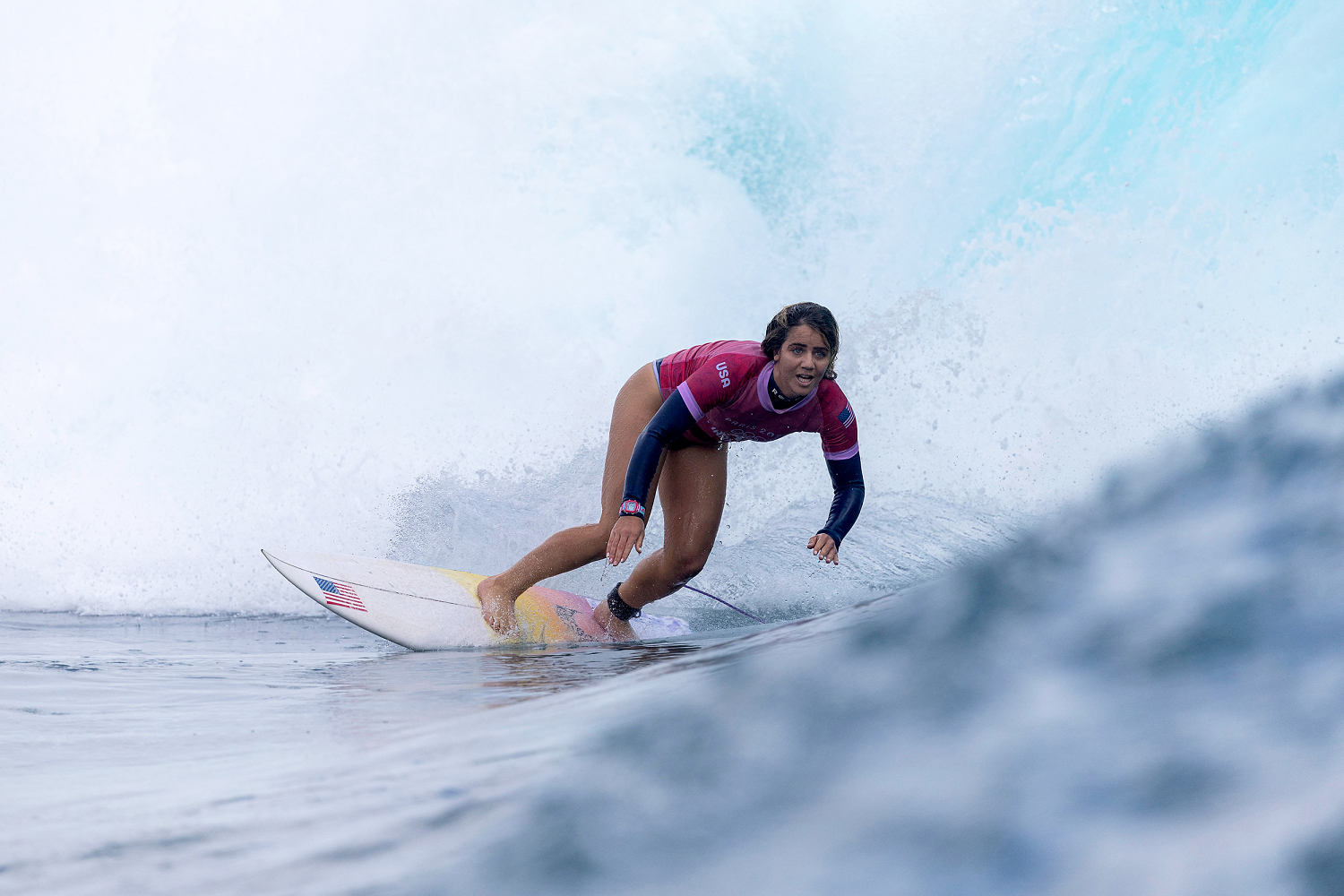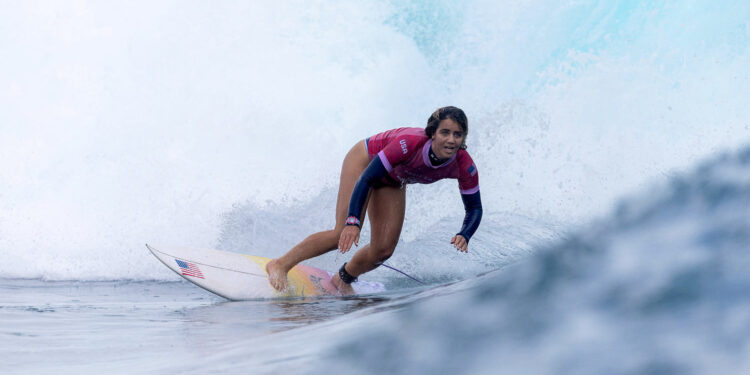
Olympic organizers made a big bet in holding the 2024 Paris Olympics surfing competition at an ominous location in French Polynesia nearly 10,000 miles from Paris, with pretty much no space for spectators.
Teahupo’o’s green barrels wowed the world, however, while helping the U.S.’ Caroline Marks and Kauli Vaast — who was born and raised on Tahiti in French Polynesia and represented Team France — achieve magical moments while earning gold medals. Despite reef-inflicted injuries and moments when the location was questioned as just too dangerous, it would be hard to conclude Teahupo’o didn’t provide its own golden moments.
The shallow reef break that heaves south swell into a brick wall of water helped to define the best in surfing at this moment, and the elimination of Brazil’s Gabriel Medina, a three-time world champion, from silver and gold contention showed the location’s unforgiving influence.
The U.S.’ John John Florence, the world’s top-ranked professional surfer, was eliminated in the third round by Australia’s Jack Robinson, who took silver. Five-time world champion and defending gold medalist Clarissa Moore was eliminated in the quarterfinals after she lost to a determined Johanne Defay, who would fight on to win a bronze medal for France.
Moore said she would retire from competitive surfing after the Olympics, regardless of the outcome, and she expressed happiness over her time in Tahiti for the games. She took time off to prepare for the event, and she said she doesn’t regret it.
“I just hope that at the end of the day I can encourage whoever is watching, win or lose, don’t be afraid to go into it fearlessly and don’t be afraid to fail,” Moore said after her loss. “The process has been so much fun.”
After epic waves graced Teahupo’o on July 29, the sea calmed, and organizers were left with stressful decisions about when to hold the medal rounds. They had a 10-day window for roughly four days of surfing, using Surfline’s private wave forecasting to make the call for heat days.
Monday’s conditions were so-so, but the lack of juice was a challenge in itself, and those with a champion’s mindset were left to make the most of it. Some edged out competitors in “paddle battles” that established important wave priority. Others surfed as if conditions didn’t matter — the ballet and athleticism of walking on water would shine through.
It did.
Gold medalist Vaast of France was pushed deep into a rare barrel by his finals foe, Robinson of Australia, as both paddled for the first wave of their heat. Vaast should have thanked him, because Vaast stayed deep, using the front of his board to hunt for light, and emerged in a wave that should have consumed him.
It was an Olympic moment. Robinson responded with a barrel of his own, but after one more from Vaast, the sea died down, almost defiantly, for more than 10 minutes, and the heat’s time quickly expired, with Vaast taking gold.
Conditions for the women’s heats weren’t as lucky, leaving competitors to create opportunities from power surfing — carving long lines, hitting the top and creating a shower of spray, and floating down with Teahupo’o’s guillotine of a lip.
Defay seemed to work each wave this way, relentlessly, earning bronze for France.
Marks took gold in a lip-bashing final heat that could have gone either way. Neither Marks nor Brazil’s Tatiana Weston-Webb gave an inch during the heat, and Marks earned gold by one-tenth of a point.
Teahupo’o did its job, presenting the state of the art of surfing to the world without killing or maiming, although Colin Jost’s foot might take some more time to recover after Jost, the “Saturday Night Live” cast member and NBC surfing commentator, was injured by Teahupo’o’s notoriously sharp reef.
For some it felt like surfing was finally on a proper stage and, for the Olympics, here to stay.
The International Surfing Association — the Encinitas, California-based sanctioning organization for Olympics competition, which had been lobbying for inclusion in the Games since the mid-1990s — is characterizing the Teahupo’o competition as a full-circle moment.
The nonprofit organization ties surfing’s Polynesian roots to Teahupo’o’s own precolonial surfing lore and the dream of Hawaii’s Duke Kahanamoku, who spread surfing to the mainland U.S., to make it an Olympics sport back in the early 1900s.
The story seems resolved, but it would be a fair question to ask whether the 2028 Los Angeles Olympics, in a Southern California region that claims to be the home of contemporary surfing culture, can top Paris.







